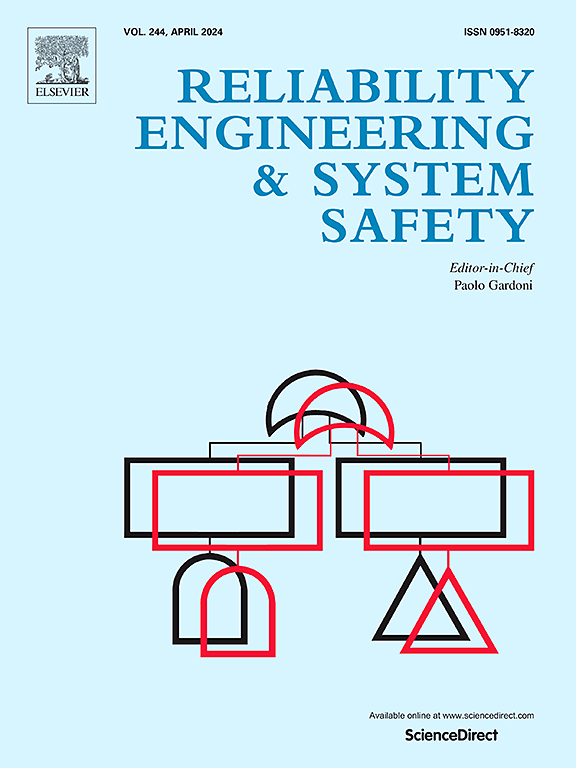An active learning method combining MRBF model and dimension-reduction importance sampling for reliability analysis with high dimensionality and very small failure probability
IF 9.4
1区 工程技术
Q1 ENGINEERING, INDUSTRIAL
引用次数: 0
Abstract
Multiple surrogate models suffer from the curse of dimensionality and Radial basis function (RBF) model is particularly well-suited for approximating of high-dimensional performance functions. Additionally, by leveraging matrix operations, the prediction time of RBF model can be significantly reduced. However, when the failure probability becomes extremely small, the prediction time of matrix-operation RBF (MRBF) model is also prohibitive. To address the challenges posed by both high dimensionality and very small failure probability, we propose an active learning method that fuses the MRBF model with a novel importance sampling method—iCE-m*. iCE-m* is a cross-entropy importance sampling embedded dimensionality reduction mechanism. Firstly, we define the instrumental density series of iCE-m* based on the prediction information of MRBF, which fuels iCE-m* to generate candidate samples covering the region near the limit state surface. Then, we propose a new learning function that measures the coefficient of variation of the square of the performance function, which helps identify the optimal training points near the limit state surface. The performance of the proposed method is demonstrated through five high-dimensional problems. Compared with state-of-the-art methods, the proposed method is highly competitive in terms of both function evaluations and computation time.
将MRBF模型与降维重要性抽样相结合的主动学习方法用于高维小失效概率的可靠性分析
多代理模型存在维数缺陷,径向基函数(RBF)模型特别适合于逼近高维性能函数。此外,利用矩阵运算,可以显著缩短RBF模型的预测时间。然而,当失效概率变得非常小时,矩阵运算RBF (MRBF)模型的预测时间也令人望而却步。为了解决高维数和极小失效概率所带来的挑战,我们提出了一种将MRBF模型与一种新的重要采样方法- ice -m*相融合的主动学习方法。iCE-m*是一种交叉熵重要抽样嵌入降维机制。首先,我们根据MRBF的预测信息定义了iCE-m*的仪器密度序列,该序列为iCE-m*提供燃料,生成覆盖极限状态面附近区域的候选样本。然后,我们提出了一个新的学习函数,该函数测量性能函数平方的变异系数,有助于识别极限状态面附近的最优训练点。通过5个高维问题验证了该方法的有效性。与现有方法相比,该方法在函数评估和计算时间方面具有很强的竞争力。
本文章由计算机程序翻译,如有差异,请以英文原文为准。
求助全文
约1分钟内获得全文
求助全文
来源期刊

Reliability Engineering & System Safety
管理科学-工程:工业
CiteScore
15.20
自引率
39.50%
发文量
621
审稿时长
67 days
期刊介绍:
Elsevier publishes Reliability Engineering & System Safety in association with the European Safety and Reliability Association and the Safety Engineering and Risk Analysis Division. The international journal is devoted to developing and applying methods to enhance the safety and reliability of complex technological systems, like nuclear power plants, chemical plants, hazardous waste facilities, space systems, offshore and maritime systems, transportation systems, constructed infrastructure, and manufacturing plants. The journal normally publishes only articles that involve the analysis of substantive problems related to the reliability of complex systems or present techniques and/or theoretical results that have a discernable relationship to the solution of such problems. An important aim is to balance academic material and practical applications.
 求助内容:
求助内容: 应助结果提醒方式:
应助结果提醒方式:


